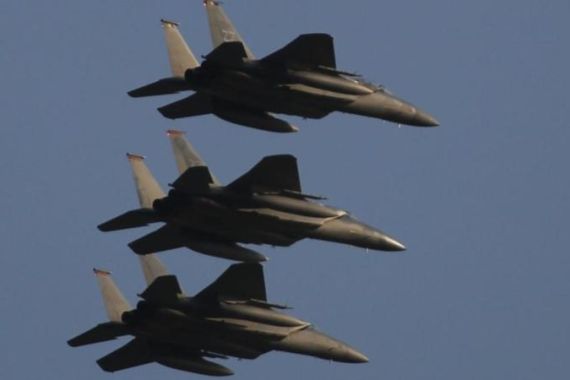Japan warns China over ‘airspace violations’
Tokyo’s warning comes as China rebukes US for opposing actions that “undermine” Japan’s administration of islands.

Japan has said it may fire warning shots to keep foreign aircraft from violating the airspace over a set of dispuated islands, in the latest verbal exchange between Tokyo and Beijing.
Japanese officials made the comments after Chinese fighter jets recently tailed its warplanes near the islands in what is believed to be the first scrambling of Chinese air force jets since the tensions began to rise last spring.
According to Chinese media, a pair of J-10 fighters was scrambled after Japanese F-15s began tailing a Chinese surveillance plane near the disputed islands in the East China Sea.
China has complained the surveillance flight did not violate Japanese airspace and the F-15s were harassing it.
Tracer rounds
Concerns have grown over official comments suggesting new Japanese Prime Minister Shinzo Abe and his Cabinet are considering the use of “tracer” fire as a means of responding to airspace incursions.
Tracer rounds are designed to burn brightly to get the attention of a pilot who may have missed other warnings due to a radio malfunction, while also indicating that the aircraft firing them is prepared to take further action.
“Every country has procedures for how to deal with a violation of its territory that continues after multiple cautionary measures,” Itsunori Onodera, the Japanese defence ministr, said on Wednesday when asked if tracer shots would be fired against intruding aircraft that refuse to change course.
 |
“We have response measures ready that are consistent with global standards.”
Onodera said the use of warning shots has long been provided for under Japan’s defence policies and is widely accepted under international rules of engagement.
Japan’s air force has not actually resorted to them since 1987 – against a Soviet aircraft – and none were fired last week.
But Chinese and Japanese media have suggested Tokyo is publicly floating the possibility to test China’s reaction.
US concern
The escalation of tensions has worried the United States, with Secretary of State Hillary Clinton saying on Friday that while the US doesn’t take a position on who has sovereignty over the islands, it opposes “any unilateral actions that would seek to undermine Japanese administration”.
That brought a sharp retort from the Chinese Foreign Ministry on Sunday.
The comments “ignore the facts” that the islands are China’s inherent territory, spokesman Qin Gang said in a statement that urged the US to adopt “a responsible attitude”.
In Beijing last week, a Foreign Ministry spokesman said China is on “high alert” and suggested Japan is escalating the tensions over the islands, called the Diaoyu in China and the Senkaku in Japan.
Taiwan also claims the small isles, which are uninhabited but may be surrounded by valuable underwater natural resources.
‘First shot’
“Chinese planes and ships are exercising normal jurisdiction in the waters and airspace surrounding the Diaoyu Islands,” spokesman Hong Lei said.
“We are opposed to the operations of Japan’s planes and ships, which violate our rights around Diaoyu. We are on high alert against this escalation.”
Chinese media quoted military academics with a much more fiery response.
“Japan’s desire to fire tracer warning shots as a way of frightening the Chinese is nothing but a joke that shows the stupidity, cruelty and failure to understand their own limitations,” Major General Peng Guangqian of the Chinese Academy of Military Sciences was quoted as saying by the China News Service and other state media.
“Firing tracer bullets is a type of provocation; it’s firing the first shot,” he said.